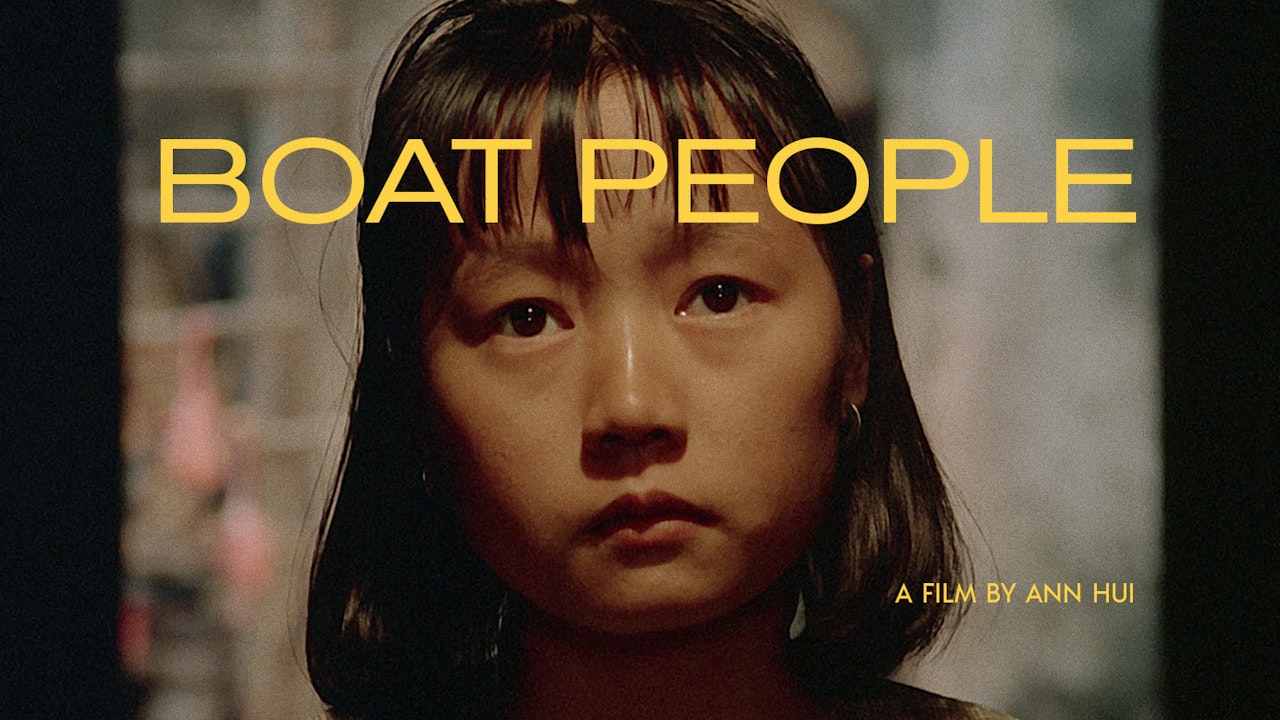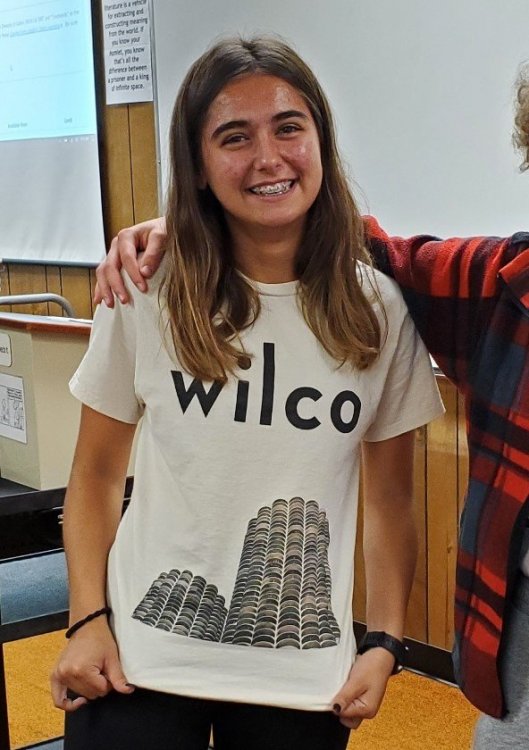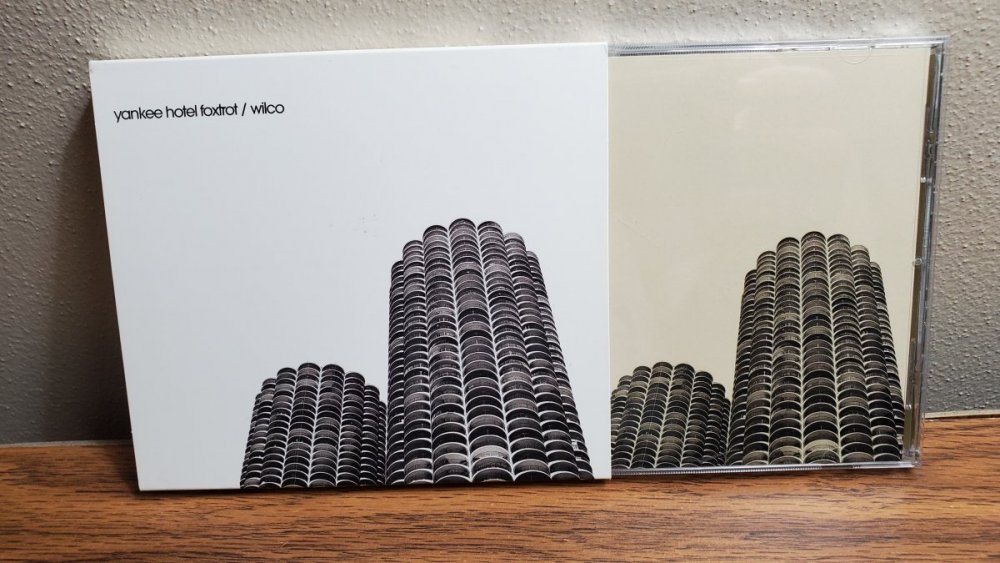-
Content Count
3570 -
Joined
-
Last visited
Posts posted by Beltmann
-
-
There’s a whiff of exploitation about Hounds of Love, which uses as its suspense template the true crime story of a Western Australia couple who kidnapped and tortured a series of girls in the ‘80s, but director Ben Young’s artful staging and emphasis on psychology go a long way in mitigating those concerns. I found the movie gripping, thoughtful, and, by the end, rather moving. It’s also anchored by three female performances of unusual depth. It's October, so I was in the mood for an off-beat horror movie and this fit the bill quite nicely.
-
There’s plenty of scary stuff in The Last Duel, even if it functions as a Rashomon-style drama about sexual assault in medieval France rather than horror. I didn’t care for Ridley Scott’s decision to iron everything into a smooth, gray/blue haze--it feels like an affectation for a story already muddied by its competing versions of truth--but otherwise the movie is one of his stronger exercises in narrative. I found it curious how the screenplay makes its biggest, obvious points with a battle-axe but then presents deeper ideas in subtle, easy-to-miss ways. This is especially true in its final third, which focuses on the voice of Marguerite de Carrouges (Jodie Comer), who in real life needed the help of her knight husband (Matt Damon) to formally accuse a squire (Adam Driver) of raping her. (Perhaps credit for the nuances should go to Nicole Holofcener, who assisted Damon and Ben Affleck with the writing.) Everything leads to a violent, trial-by-combat spectacle between Damon and Driver that counts as a rare action scene rooted in genuine character conflict, with real meaning at stake. I haven’t been so invested in a sword fight since Rob Roy (1995), a minor revenge classic that has some plot overlap with The Last Duel.
-
That VU doc was such a wonderful, woozy experience. Loved it.
-
 2
2
-
-
Thanks to the Criterion Channel, I was finally able to catch Ann Hui’s Boat People (1982), a Hong Kong classic that I’ve been hankering to see for several decades. Mixing sharp social criticism with broad melodrama, Hui follows a Japanese photojournalist as he tries to circumvent the propaganda ministry of North Vietnam and pull back the green curtain obscuring the nation’s hidden horrors.

-
Update: She wore it again today. When I asked whether it was going to be part of her regular rotation, she said that it might be her favorite shirt.
"It's obviously your best shirt," I said.
-
 2
2
-
-
Hoping to surprise me, one of my students wore this shirt to class today. I actually didn't notice until halfway through my presentation on allegory in The Crucible, and then I had to power through the rest of the lesson without acknowledging the shirt. Not easy! When we ended up with a few free moments at the end of the period, I said, "Any questions about your task? No? Okay. So, we have a minute here. We have to talk about the shirt."
The entire class was momentarily perplexed, but this girl immediately beamed and stood up. I only needed five minutes to deliver an impromptu lecture on the making and release of YHF, complete with details about personnel changes, record label drama, leveraging the Internet, critical reception, and the unanticipated reverberations after 9/11."That's a really good story," said another student, as the bell rang.
(Photo shared with parental permission.)-
 5
5
-
 1
1
-
-
14 hours ago, Albert Tatlock said:
And good old ViaChicago.org was still available!
Old Faithful!
-
5 hours ago, Happeningstone said:
I had to create a new account to crack into this place! It's been so long...
Glad to see you back round here!!
-
 1
1
-
-
Even though I could have watched Cry Macho for free on HBO Max, I still went out to the theater for it. Why? Because Clint Eastwood, even now when his age is definitely showing, deserves to be seen on the big screen. The movie is at best minor Eastwood (both as actor and director). It has considerable limitations and more than a few awkward moments. But it also has unusual grace in certain passages and, given the current cinema climate, it scans as refreshingly mature storytelling. That's to be celebrated. Plus, it's Eastwood doing Eastwood-y things, which is to be savored!
-
 2
2
-
-
5 hours ago, thinmyheart said:
I took a friend for his first Wilco show and he was suitably impressed.
Fantastic! At the show, I ran into a former work colleague and we ended up standing together. Despite being obsessed with Wilco, he is a recent convert (for which I'm claiming credit!) and Friday was his first time seeing Wilco live. He, too, was knocked out by the "Via Chicago" presentation.
"Do they always play it that way live,?" he asked, with a thrill in his voice. "This is epic."-
 1
1
-
-
As always, it was a pleasure to see you, too! Perhaps worth noting is how the crowd seemed to have a relatively even mix of Wilco diehards and Trampled by Turtles devotees, unlike the Sleater-Kinney/Wilco shows, which were heavily lopsided in Wilco's favor. Both fanbases, though, seemed ready to groove equally along with both bands (if only American life were always so harmonious and generous of spirit). The weather was a gift. Earlier forecasts predicted afternoon thunderstorms and scattered rain into the evening, but the climate gods waved away all the storms, perhaps because "Via Chicago" and "Bull Black Nova" were going to provide squalls enough for one city. I agree about the setlist being perfectly sturdy without being startling; the inclusion of "One and a Half Stars," one of my favorite OTJ tracks, made me happy. (Stacy had half hoped that Jeff might work in something from the "Ted Lasso" theme at some point... it was, after all, the same day as the episode's premiere!)
One other thing: Stacy and I love that Jeff has reintroduced his old dancing jig for "Hummingbird."-
 1
1
-
-
I'm a huge fan of Paul Schrader and I wish I could report that his new film The Card Counter, in which Oscar Isaac deals with the psychological aftermath of his stint as an interrogator at Abu Ghraib, ranked among his best movies. It's an ambitious and interesting work, yes, but it also feels unfocused and rather airless.
-
"White Wooden Cross" means a lot to me. First, I think it's one of the best Wilco tunes among the last few albums. But the lyrics also carry personal voltage: After my brother was killed in a car crash (a long time ago), a roadside memorial was erected and I can't hear this song and see its imagery without internalizing its meanings in very specific, raw-nerve ways.
-
 1
1
-
-
Set in Senegal and shot in Wolof, the local language, Ousmane Sembene's Mandabi (1968) tells a simple story freighted with a powerful attack on colonialism: When an unemployed man receives a money order from a helpful nephew laboring in Paris, he is thrown into a roundelay of bureaucracy that makes it impossible for him to cash the order. The real frustration, though, lies in how those with power manipulate his illiteracy, lack of proper identification, and financial ignorance for personal gain. Sembene, often cited as the “father of African cinema,” presents a Senegalese culture brutalized by colonialism. His key insight, perhaps, is that those colonized by the French have learned from their oppressors the art of exploitation and now wield it against their own kind. I've seen only half of Sembene's output, but Mandabi joins 2004's Moolaade among my favorites. (Viewed on the Criterion Channel.)
-
On 8/21/2021 at 3:38 AM, chuckrh said:
I've seen Da 5 Bloods three times now, and I still haven't been able to reconcile all of my conflicting thoughts about its pinballing ideas. I suppose that's entirely to its credit. The movie doesn't strive for realism; with the different aspect ratios and the reconfiguration of familiar genre cliches, the style and tone reminds me a little of Godard. Sometimes it even feels like satire. Lee also throws everything at the wall to signal a large thesis involving how many social ills past and present are connected skirmishes in the same neverending umbrella war. Delroy Lindo is magnificent. As a poisoned veteran whose resentment manifests in Trumpism, he commands the screen. He might be one of the most complex and fearsome characters Lee has ever conjured.
I'm especially drawn to the prevailing thread of continuous Black trauma. What's interesting is how even the simplest stuff--the gold is obviously a symbol for reparations--ends up muddier and more complex. Much has been made of how none of the actors are replaced or de-aged for the scenes set decades earlier, but that stylistic choice isn’t jarring at all. What we are seeing, I think, are memories rather than flashbacks, so it makes sense that these old men would envision their current selves inside their own memories. The choice ends up amplifying the themes.
Quite a few dialogue exchanges are didactic, but the more I consider how the movie is practically structured as film criticism--as a freewheeling, interrogative pastiche of war and adventure movie formulas--the more I wonder whether those clunky exchanges are by design. At times it seems that Lee is intentionally appropriating the bombastic qualities of classic Vietnam movies (there's a reason for the transparent nod to Apocalypse Now) in order to put the screws to how cinema has typically addressed such subject matter.
The casting of Chadwick Boseman, too, only promotes the idea of watching this story through the prism of cinematic baggage--Norman, their romanticized mentor, is Jackie Robinson, James Brown, Thurgood Marshall and T'Challa all at once.
-
Since I'm not an audio engineer, I enjoyed reading this thread and learning some things from those of you who are more expert. Thank you!
-
 2
2
-
-
On 7/30/2021 at 6:46 AM, calvino said:
Watched the The Thin Red Line.
To these eyes, The Thin Red Line is one of the greatest war movies; like many Malick movies, it's closer in spirit to poetry than traditional narrative, but it still manages to be cerebral and scary. It's not for everybody, of course. I remember exiting the theater and overhearing another filmgoer mutter, "That was the worst movie I've ever seen." (My heart went out to him... imagine going through life with such misguided taste!) I also have deep affection for Malick's The New World, which is an entirely different creature when seen on a big screen. That was probably one of the most purely immersive experiences I've ever had in a theater. I felt transported to the New World, and I can still hear the sounds of that movie (especially the wind and the insects and the waves) ringing in my ears. The Criterion edition is worth every penny.
-
Finally caught up with An Elephant Sitting Still, which I’ve been meaning to watch for several years. Why did it take so long for me to press play? Well, it’s a bleak, introspective portrait of hopeless lives that stretches to nearly four hours, and not long after its making the young director, Hu Bo, died by suicide. Indeed, death cascades throughout the story’s four intricate, intersecting arcs about people trying to carry on in a ramshackle Chinese town. Much has been made of the movie’s long, unbroken shots, but the technical prowess is secondary, I think, to Hu Bo’s assured reliance on closeups that contain rich, sensitive emotional detail. The movie concerns school bullying, volatile relationships, and unethical choices, but perhaps its real subject is how the human face (and, by extension, cinema) contains multitudes.
-
 1
1
-
-
On 4/29/2021 at 1:54 PM, sonicshoulder said:
I've watched Do The Right Thing twice in the last month. It's a modern masterpiece.
I don't know how many times I've seen Do the Right Thing since 1989--I teach it most semesters--but my admiration only continues to deepen. I think it's an enduring American classic that, unfortunately, has lost none of its cultural urgency. -
BAD REPUTATION / dir. Kevin Kerslake, USA, 2018HOW TO BUILD A GIRL / dir. Coky Giedroyc, UK, 2018I’m rather allergic to overly celebratory nonfiction biographies that seem like Wikipedia entries with video clips, but what the hell: I enjoyed “Bad Reputation” because I like Joan Jett and I, um, love rock ‘n’ roll. Speaking of music, I also had mixed feelings about the coming-of-age comedy “How to Build a Girl,” but Beanie Feldstein’s performance as teen rock journalist Johanna Morrigan contains multitudes. By turns she is a mouse, a chameleon, and a circus ringleader, and always we can see the authentic Johanna underneath, striving to emerge.
-
Wow! This is amazing. I'm already drawing up a mental list of all the top tunes I need to hear again...
THANK YOU. -
Yankee Hotel Foxtrot remains my favorite Wilco record and perhaps my favorite record of all-time. I'm counting on a forthcoming box set!
My first Wilco live show was during the YHF tour (July 3, 2003, at Summerfest in Milwaukee). My wife, who was largely uninitiated into Wilco at the time, leaned over during the distortion of "Poor Places" and asked, "Is it supposed to sound like that?" Fast forward through 12 years (and many more shows). In 2015, it is my wife who suggests we make anniversary plans that involve flying to Colorado, because Wilco at Red Rocks is essential.
My CD has the cardboard cover, and it is close to an off-white color. -
On 4/6/2021 at 12:55 PM, Chez said:
I watched The Sound of Metal a few months back and loved it. Great performances.
I managed to see six of the eight Best Picture nominees in the theater and I wish Sound of Metal had been one of 'em. The sound design is remarkable and I would have loved being lost in that soundscape, captive and concentrated. Just today I was reading about how the sound designer created a device that could capture the sounds of Riz Ahmed's body (such as his swallowing and his heart beating and his lips smacking). Those sounds were then carefully layered into the auditory texture to enhance the sense of being totally inside Ruben's head, even hearing his own body vibrationally, the way a person does from inside-out.
I've seen the movie twice, most recently a few days ago after my 13-year-old son asked to see some of the Best Picture nominees. His usual viewing diet consists of, say, Jurassic Park and Spongebob, so I leaped at the chance to share some alternative fare. He is a very sensitive and empathetic boy, so he was completely gripped by the story and Ahmed's performance. He liked it a lot, but to my surprise he said that he liked Nomadland even more! Along with Minari, those were the only nominees that I felt were age-appropriate for him (every kid is different). -
On 4/22/2021 at 10:04 PM, u2roolz said:
The Tweedy Show Thursday April 22 Episode 170
I'm Kind Of In Love With You
-- Jeff talks about his grandmother's farts and the various nicknames for her.
Two quick thoughts: Of all the new songs played on the Tweedy Show, "I'm Kind of Love With You" is the one that keeps rattling in my brain. For months now, I find myself humming it All. The. Time. Can't wait to hear an official recording (here's to hoping for a full band version).
Also, the discussion of grandma farts was hilarious because my grandmother did the precise same act of pseudo-surprise that Jeff described. So did my great-grandmother... who also seemed to cherish those moments when the great-grandchildren would sneak a whoopee cushion under her seat. Her response was always a red-faced "Oh, excuse me!"






Wilco — 26 October 2021, Los Angeles, CA (Orpheum Theatre) [Night 2 of 2]
in After The Show
Posted
I read every word of every dispatch, Paul. And I'm sure I'm far from alone! Thank you for everything you do for the world of Wilco!